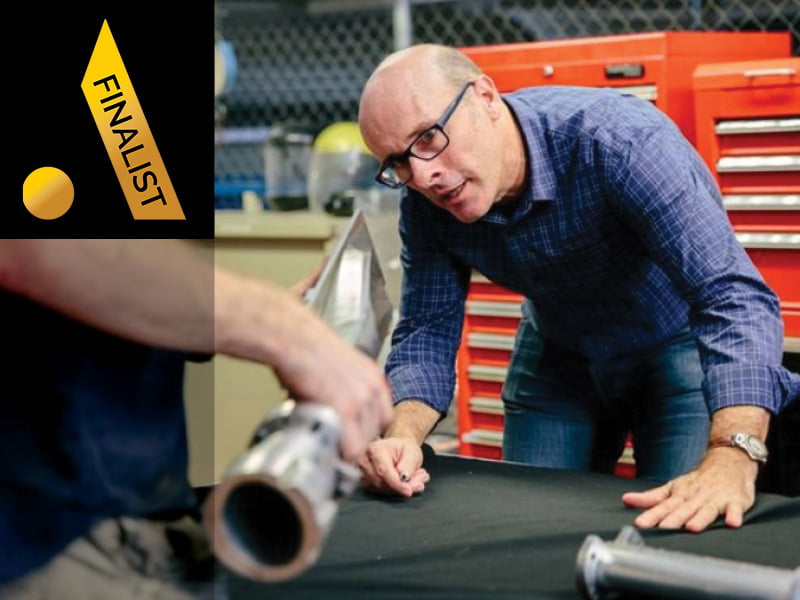At the local runway, a modestly sized craft sits like a paper plane, neatly folded on its launch site, awaiting its daily sequence. It glints in the sun as a ground operator triggers an unmanned lift-off, powered by a reusable rocket that accelerates the vehicle past the sound barrier and onto to Mach 5.
An airbreathing engine takes over, sucking oxygen through its combustion chamber where it collides with pure hydrogen fuel and is quickly expelled as water vapour. Propelled by the power of this eco-friendly engine, the Delta-Velos is thrust all the way to a possible Mach 12 – that’s 12 times the speed of sound.
Its silver wings skim the edge of space as the scramjet releases its satellite payload into orbit and in a practiced, sweeping arc returns to land, back where it took off and ready for tomorrow’s run.
This is the vision of Hypersonix chief executive and former NASA engineer, Michael Smart. It’s a vision of a green future for aerospace, and beyond that, of green and impossibly fast travel for future travellers.

“The way most satellites are put into space, they use a rocket that you get thrown away every time,” says Dr Smart. “It’s totally ridiculous.”
“We’re not even just talking about space junk, things that are left in space to float around. I’m talking about massive rockets that just get thrown into the ocean. And they create all this pollution,” he said.
“It’s like buying a brand-new car, you drive it to the beach once, and then you just throw away the keys and never drive it again. It’s just crazy.”
By comparison, the Hypersonix scramjet will be reused a minimum of 100 times.
Hypersonix is part of what is sometimes referred to as the “new space” industry: private companies that are developing businesses centred on aeronautic operations that would once have been the purview of national governments.
Earlier this year the Morrison government announced a fresh A$700 million investment in the civil space sector in furtherance of its plans to grow the space economy to A$12 billion by the year 2030.
Hypersonix is now at the commercialisation stage with its satellite deployment craft, the Delta-Velos. The craft will be able to deploy from just about any location with a runway, which will really help accelerate the democratisation of satellite deployment around the world.
We are currently living through a boom in satellite demand and deployment. There was a steady growth in the number of satellites launched into orbit at a rate of somewhere between 60 and 100 each year until 2010.
However, an explosion in the use of data to facilitate modern life has blown that number right out of the sky. Governments and, more importantly, new space companies like Elon Musk’s SpaceX have launched more than 1,400 satellites this year alone.
From here, Dr Smart says we can expect to be kicking our feet up in hypersonic passenger craft within the next 25 years.
“That’s the sort of aircraft that could fly from Sydney to London in two hours,” he says.
“Right now, planes fly at about 10km of altitude. We would be flying at 30km of altitude. So, three times as far. At that altitude, you could see the curvature of the earth. You’d see the darkness of space.”
Hypersonix Launch Systems is a Finalist in the Space and Remote Automation category of the InnovationAus 2021 Awards for Excellence.
Do you know more? Contact James Riley via Email.
